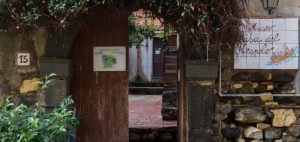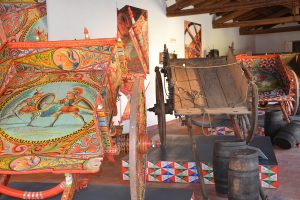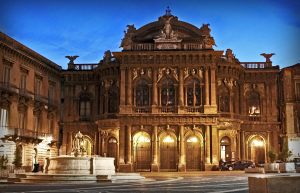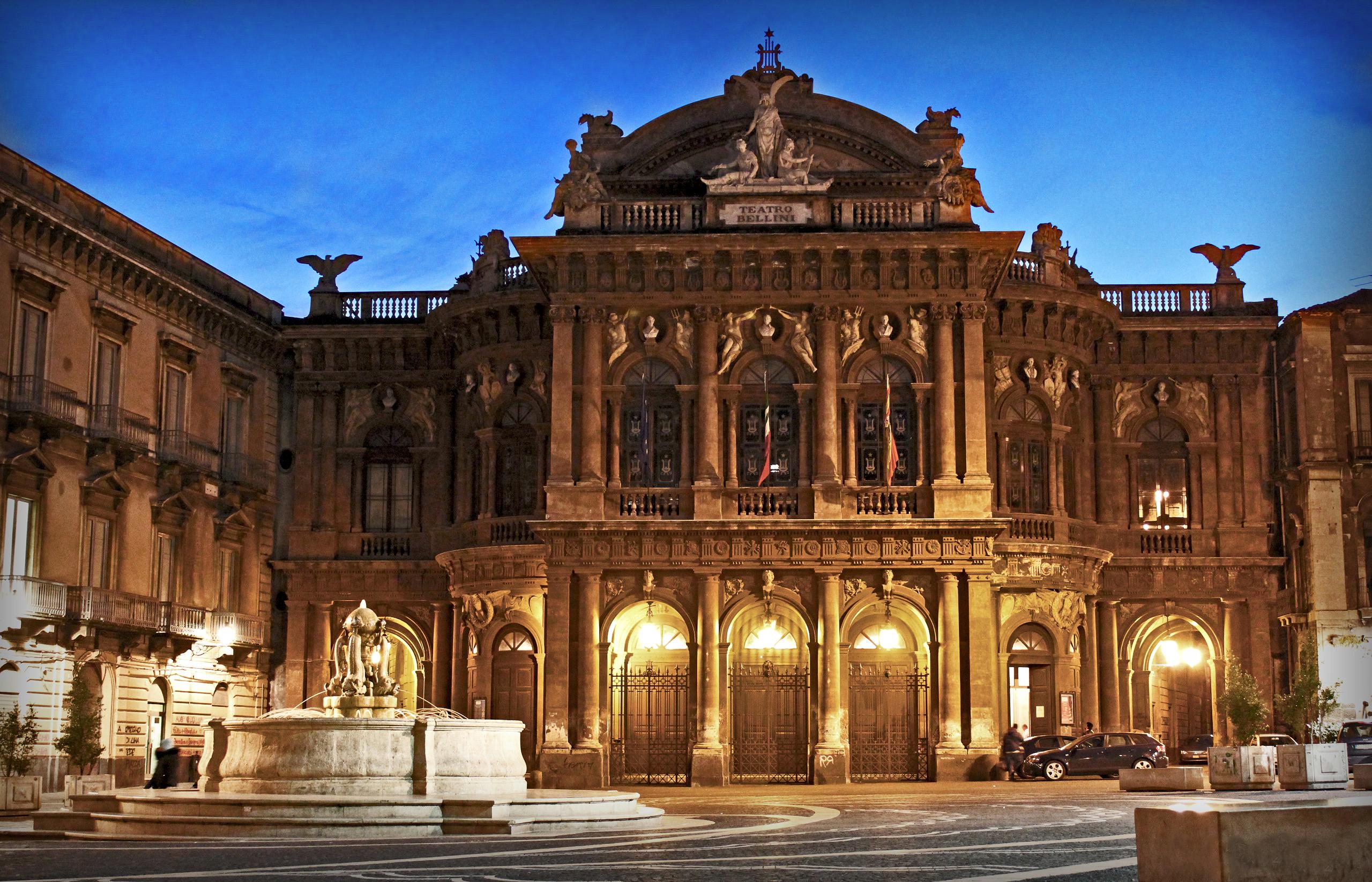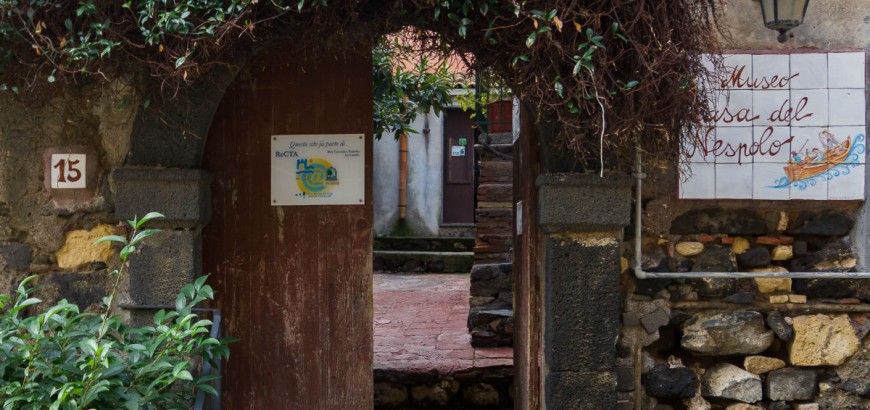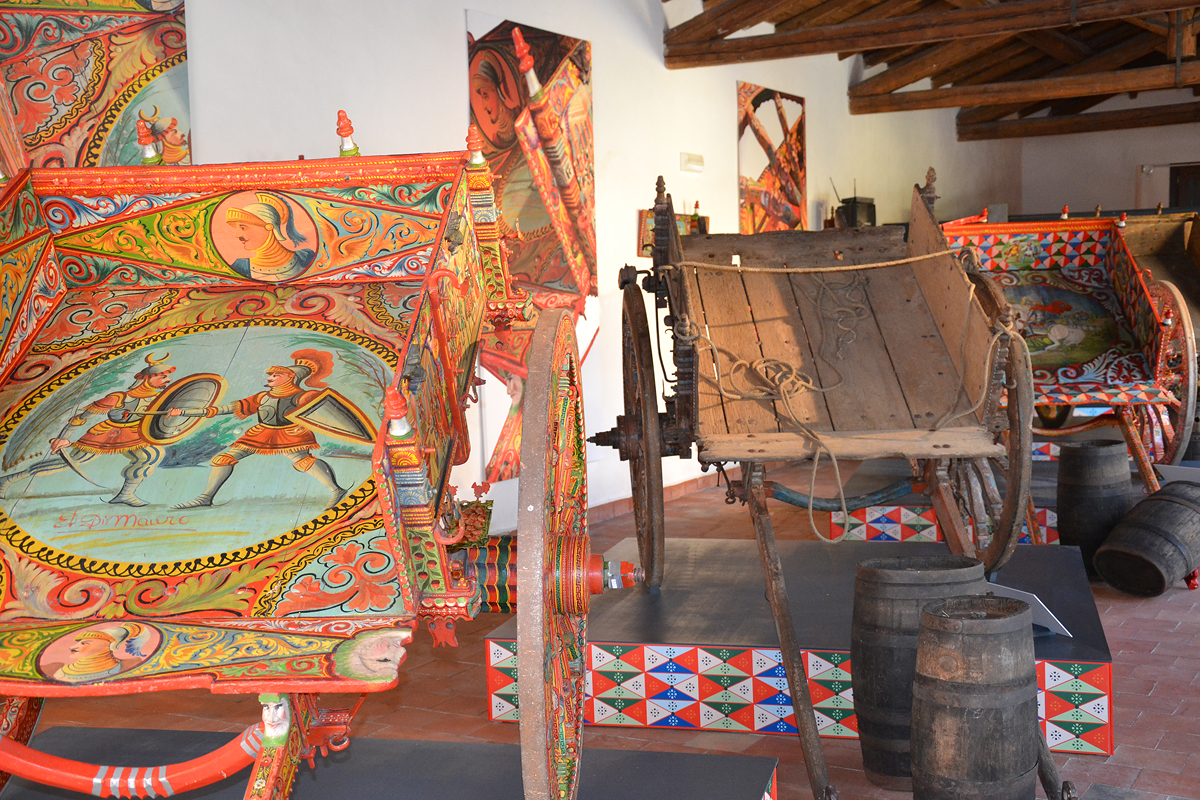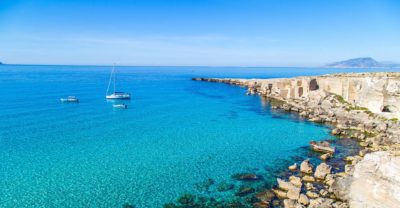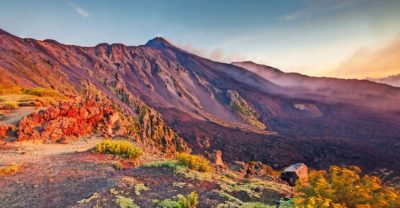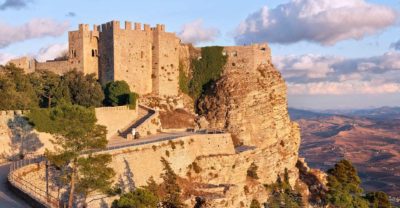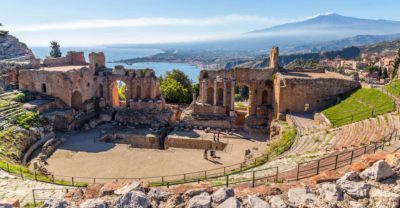Arts and Culture
Catania
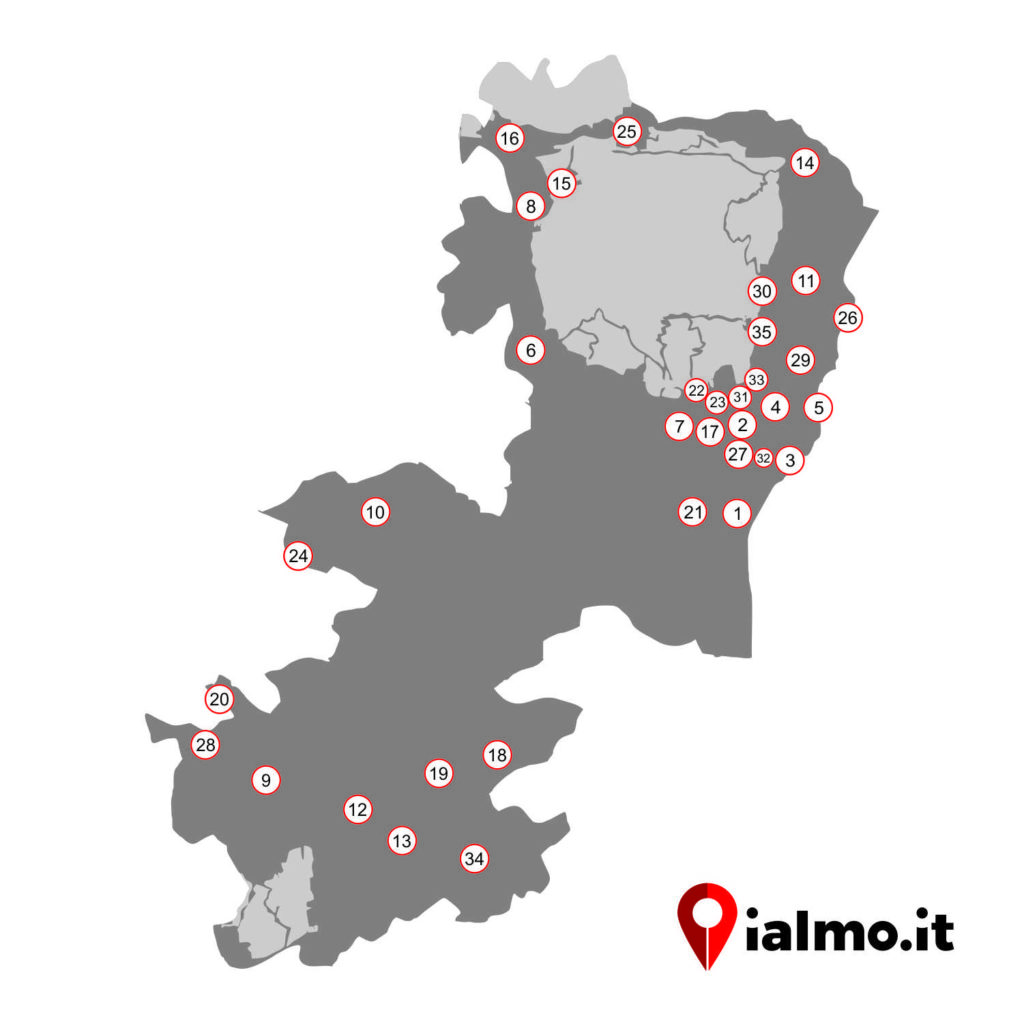
The Massimo Vincenzo Bellini Theater is the theater of choice for the Catania opera. Inaugurated in 1890 with the representation of the Bellini Norma, it presents a neoclassical façade with an opulent and very rich room of decorations. The structure consists of four tiers of boxes and a gallery, the ceiling is entirely frescoed with scenes taken from the works of the composer from Catania. It was defined by Beniamino Gigli “the best theater” in the world for the performance of acoustics. Today it is home to interesting opera and symphonic seasons. Among the other theaters to be reported in Catania we mention: Teatro Stabile (via Umberto I No. 312); Giovanni Verga Theater (via Giuseppe Fava n.39); Sangiorgi Theater (via Antonino di Sangiuliano No. 233); Piccolo Teatro (via Ciccaglione n.29), Metropolitan Theater (via Sant’Euplio n.21) and Teatro ABC (via Pietro Mascagni). As for the museums, one of the most prestigious in Catania is the Cinema Museum located inside the Ciminere fairgrounds (in Piazzale Rocco Chinnici). The Museum was designed by the famous architect François Confino and inside it are possible to view some collections of magic lanterns, projectors and lamps used as film sets machines in the early twentieth century. Upstairs you can take a virtual path in the history of cinema, from the first projections of the Lumiere brothers through the silent cinema to the present day, guided by the narration of the actor Lando Buzzanca. Feature is the room dedicated to cinema in Sicily, especially in Catania, with the screening of pieces of film shot in the capital and original posters. Among the other most important museums of the capital of Etna we mention: Historical Museum of the 1943 landing in Sicily (Piazzale Rocco Chinnici); City of Science (via Simeto No. 23); Museum of Zoology (via Androne No. 81); Giovanni Verga Museum House (via Sant’Anna 8); Emilio Greco Museum (Piazza San Francesco D’Assisi); Diocesan Museum (via Etnea n.8); Botanical Garden Museum (via Etnea No. 397); Antiquarium of the Roman Theater (via Vittorio Emanuele II No. 266); Museo Civico Castello Ursino (Piazza Federico II di Svevia); Paleontological Museum of the Federiciana Academy; Valencian Santangelo Museum (via A. Santangelo Fulci, 55 / A-B) and the Toy Museum (at the Viale Ciminiere Exhibition Center in Viale Africa).
Municipal Theater: it is a modern theater built in 2004 and born from the renovation of a municipal area previously used as a warehouse. It can hold over three hundred spectators and is used for theatrical performances and musical performances.
In Acitrezza, a hamlet of Aci Castello, the “Casa del Nespolo” Museum is dedicated to the memory of the very famous Verghiano novel I Malavoglia. This is the original house of setting the script and allows you to relive the atmosphere of the time in the furnishings and utensils of everyday life. The ancient medlar in the courtyard is still present. The interior features a room dedicated to the film La Terra Trema filmed by Visconti in these places while in another room you can see a collection of tools and tools, even very old, fishing.
Civic Museum, at the Norman Castle, Piazza Castello n. 25. In a suggestive location inside the Castle of Aci, it hosts a rich mineralogical collection and archaeological finds. Very nice the small botanical garden created outside.
Museo del Carretto Siciliano: a curious museum that houses several examples of Sicilian cart (some decorated with the only sculptures, without paintings) of excellent workmanship.
Uniforms Museum: inside there are historical uniforms, medals, headdresses and military objects from the 18th to the 20th century. The collection originally belonged to Ing. Acese Aldo Scaccianoce who ceded it to the Sicilian Region. Among the most famous portraits are those of Emperor Francesco Giuseppe and Umberto II. Very significant is the case dedicated to the 150th anniversary of the Unification of Italy which contains the blankets with the initials embroidered in gold by King Umberto I and Vittorio Emanuele III.
Museo dell’Opera dei Pupi: it hosts the permanent exhibition of the collection of the Pennisi Macrì theater in Acireale, of the original Sicilian theatrical equipment, of the puppets and the heads of puppets.
Teatro dell’Opera dei Pupi: puppet theater (Pupi) that stages the events of Charlemagne and his paladins adapted from the History of the Paladins of France and the Orlando Furioso. It is the first Italian heritage to have been included by Unesco among the Oral and Intangible Heritage of Humanity.
Located in the Norman Palace, the Etneo Archaeological Museum houses archaeological finds from excavations in the territory of Adrano and from other places in eastern Sicily and dating over a period of several millennia, from the Neolithic age up to the Middle Ages. The Museum also houses an archive and a section dedicated to the historical-artistic and ethno-anthropological collections.
The “Belpasso Musei” Civic Museum is composed of several sections aimed at enhancing the archaeological, ethno-anthropological, naturalistic and socio-cultural heritage of the territory. The exhibitions are set up in the House of Antonino Russo-Giusti and in the Casa del Lampionaio. The Mechanè section (Multimedia Museum of the Carri di Santa Lucia), is intended to illustrate an ancient tradition, that of Sicilian carts, which is commemorated every year during the eve of the patron saint’s day. The section of the Venerando Bruno Ethno-anthropological Museum has recently opened and houses the rich collection that belonged to the archaeologist Bruno Venerando with over 330 artifacts, mostly working tools used for agricultural activities and ancient domestic tools that reconstruct the past of the belpassese civilization. The Museum also houses a section dedicated to the war events that ravaged the Belpassese territory during the Second World War, the Museum of contemporary sculptures and the path of the literary Street of Nino Martoglio.
Gullotti Sicilian Cart Museum, located in the Cantera district; Historical Museum of Nelson Castle and Lava Stone Sculpture Museum, in the park in front of Nelson Castle.
The Civic Museum housed in the former Bourbon prison is of considerable importance. Inside there is the city’s picture gallery with paintings by Sicilian artists and the fercolo di San Giacomo, in gilded and silver wood, dating back to the late sixteenth century. Also remember: the Museum of Ceramics that collects and exposes about 2,500 finds made in Sicily from prehistoric times; the Museum of contemporary ceramics at Palazzo Reburdone; the Museum of Caltagirone and Sicilian Historical Villas in Villa Patti; the Hoffmann Technological Museum; the Museum of Contemporary Art; the International Crib Museum; the Sicilian Puppet Show; the Naturalistic Museum at the Santo Pietro hamlet and the Pinacoteca Museo dei PP. Cappuccini at the church of the Capuchin friars.
Prospero Grasso Civic Museum, located in via Papa Giovanni XXIII. The museum collects memories, works and objects that tell the history and the local culture as well as a wide and well-kept archaeological section where the finds unearthed in the archaeological site of Monte Iudica are exposed.
Mediterranean Aquarium: inaugurated in 2003, it preserves over five hundred specimens of fish species typical of Mediterranean and tropical waters. The reconstruction of an African lake and a tropical area with coral reef are unique.
Etneo Museum of Migrations, the area traces the migration phenomenon that has affected, over the years, the countries of the Etna area. Inside it contains many original documents that testify to the arrival of Sicilian citizens in America, Australia and Northern Europe. There is also a multimedia space used for the projection of short films and documentaries on the subject, as well as the preservation of press reviews of the time.
Museo del Presepe: it hosts a hundred collections of nativity scenes from all over Italy, built with the most varied materials.
Museum of the habits and customs of the Etna people: it is a museum that recreates the environments of rural and rural life of the inhabitants of the Etnean countries in the twentieth century. Preserves agricultural tools and machinery used for harvesting olives or for harvesting, as well as household appliances currently no longer used.
Civic Museum, Piazza Carlo Maria Carafa n. 1. It houses the archaeological finds unearthed during the excavations carried out over the years on the territory. Inside you can see the remains of grave goods found in the necropolis found near the district of Madonna del Piano, in addition to the pottery and tools commonly used in the classical era. Beautiful blue ceramics exhibited in the last room of the museum, testimony of the historical presence of the artisanal decorative still vital today.
Antonino Di Vita Museum, Corso Umberto I n. 208. This is an archaeological museum where many of the remains found during excavations in the territory are kept.
Ethnographic Museum, at the Ex Monastero Santa Chiara and San Benedetto. Exhibition place where the environments of the ancient rural tradition are recreated with everyday objects and work tools that are now unusual.
Etnographic Ethnographic Museum, located in the headquarters of the Pro Loco, houses natural artifacts and handicrafts that tell the natural history and traditions of the town.
Museo Francesco Messina, houses a permanent exhibition of the works of the artist Salvatore Incorpora and 40 graphic works by the sculptor Francesco Messina. The exhibition was curated by Vittorio Sgarbi and Antonio D’amico.
Salvo Nibali Civic Museum, built in 1952 in order to preserve and protect the precious archaeological heritage discovered in the area.
In the town there are the Historical Museum of Nelson Castle where you can visit the noble residence of the Dukes Nelson and the Museum “Maniace the Future in Our Roots”, inaugurated in 2004 in the headquarters of the Pro Loco of Maniace and tells the story of the municipality from Arab period until the recent administrative autonomy is obtained.
The Teatro Stabile di Mascalucia is located in via Don Bosco and has been active since 1988.
Santa Maria La Vetere Archaeological Museum, located in Via Concerie. The Museum of San Nicolò, located in the burial crypts of the church built in 1721, preserves a rich collection of liturgical vestments from the seventeenth and eighteenth centuries, the silvers of the church of S. Maria della Catena, the jewels, the votive offerings and the kit liturgical of St. Agatha. Sebastiano Guzzone Civic Museum and Historical Archive. Opened in 2007, it is housed in the premises of the Dominican friars convent complex. Antonio Cannata Museum of Contemporary Art. Baldanza contemporary art gallery.
Luigi Capuana Museum: it is located inside the writer’s native home and houses the municipal library. Worthy of note is the book collection in Esperanto, donation of the prefect Pietro Rizzo.
Corrado Tamburini Merlini Civic Museum, Viale della Rimembranza n. 8. Preserves many finds found in the area, including remains of prehistoric animal bones and Bronze Age work tools.
Ethno-anthropological Museum, at the former Friars Minor Convent, Via Carlo Alberto n.21. Collect many tools and tools of rural and rural culture now in disuse, also collecting a large number of proverbs in dialect.
Museo del Tombolo: the artisan activity of bobbin laces is a typical local treasure, the merit and pride of all the women of the town. Inside the museum it is possible to visit a wide and accurate exhibition of these works. The tombolo, probably born in China and brought to Italy by Missionary Sisters, allows the interweaving of linen or cotton thread through the rustling of wooden spindles skillfully handled by expert fingers. In the premises of the princely Palazzo Biscari, the young Mirabellese women gathered together to learn the art that would become the pride of the town. In 1910 the Opera del Tombolo was officially institutionalized with the coming from Rome of four Sisters of the Order of Saint Dorotea expressly called by the Biscay princes to settle in the palace, thus ensuring continuity. From that moment Mirabella was all a passion for bobbin that in the course of time has changed in many ways the face of the country giving it a prominent position also in the national field for the production of such precious laces, exhibited in craft exhibitions in various cities in Italy and abroad. The historical merit can be attributed to the young wife of Prince Biscari, Angelina Auteri who, firmly believing in her ambitious and courageous entrepreneurial project, offered the women of the village the chance to become independent and to prepare their children’s outfits for themselves. Over time, the tombolo became a very strong economic reality, so much so that the town deserved the name of “Città del Tombolo”.
Museum of Sacred Art, Via Madonna delle Grazie n.1. It is located in a crypt inside the Mother Church and extends into five exhibition halls, inside which are preserved sacred objects such as reliquaries, ostensors, liturgical vestments and textiles.
Dedicated to the arts, customs and customs of the inhabitants belonging to the local peasant culture, the Museum of Rural Civilization offers evidence of work and life in the Sicilian countryside between the nineteenth and twentieth centuries.
Opened to the public in 2015, the “Due Palmenti” Museum is located inside the EXPO complex in the buildings of Palazzo Pulvirenti and houses inside the tools and structures that were used to crush grapes, from the press that was used to squeeze the grapes to the tanks that received the must.
There are two museums in Raddusa: the Museo del Grano and the Italian National Tea Museum. The first aims to reconstruct the customs and traditions of the farming community of Raddusa by offering the visitor a reconstruction of the old local customs while the latter houses a very rich collection of beautiful and colorful teapots referring to the different historical periods of the Chinese imperial dynasty.
The Paolo Vagliasindi Archaeological Museum, set up in the Swabian Castle, exhibits exhibits dating from the 6th to the 3rd century BC and a collection of Sicilian puppets from the early twentieth century.
Inaugurated in 2016, Casa Allegra Wine Museum is a typical example of Etna’s rural architecture linked to wine production. The recent restoration and adaptation interventions have made the outdoor spaces usable in the summer for cultural activities related to the management of the museum such as exhibitions and events. The implementation of the archive and the use of the “palescope” with visual, acoustic and olfactory specifications have made Casa Allegra an interactive and cutting-edge museum that will contribute to the development of the territory and the tourism sector.
Museo La Contea del Caravaggio, located in via Rimini n. 1.
The Provincial Museum of Ganzaria exhibits objects of great archaeological, historical, scientific and ethnographic interest as evidence of the history and culture of the inhabitants of the area.
Santa Venerina houses the Museum of Palmento, dedicated to the ancient agricultural and handicraft activities of the area, and the Museum of oenological civilization “dating back to the second half of the nineteenth century and which houses the original equipment.
Recently inaugurated, the MACE (Museum of Contemporary Art on Etna) is an exhibition space that houses works of sculpture, painting and photography of contemporary artists. Designed as a multidisciplinary and innovative space, MACE is housed in the premises of the former slaughterhouse of Sant’Alfio.
Inside the Sanctuary of Sant’Alfio we find a very curious Museum of the ex voto that collects still poorly known and studied collections of offers made to Our Lady or directly to the Saint as a sign of gratitude for the grace received. The Museum exhibits a wide range of objects such as hats, clothing, orthopedic tools (crutches and busts), various types of weapons, shells and shards of bullets and any other object that has had a relationship with the grace received. To be noted the numerous votive tablets, that is the paintings that reproduce the scene of the miracle, that is the particular moment of grave danger that is deemed to have been overcome thanks to divine intervention.
The Museo delle Conchiglie is named after the architect Francesco Marescotti who, during his travels around the world, has collected thousands of shells. In the eighties the collection was purchased by the Municipality together with a rich library of texts on the subject and since 2008 it has been exhibited in the Museum specially set up in via del Santuario n. 4.
The Monte Serra Butterfly House is an aviary with tropical plants and flowers that hosts the world’s most beautiful butterflies along with other interesting tropical forest invertebrates such as stick insects, leaf insects and giant beetles. The visit of the structure includes an interesting lesson on the world of insects in general.
The Mu.La (Museum of the Lava and the Volcanoes) or Etna Museum (Etna Museum) is a permanent exhibition center dedicated to volcanoes and to the analysis of the anthropic activities of the Etna area strongly influenced by the presence of the majestic Etna volcano. A modern museum that is accessible to all, with its more than 1500 square meters of educational-scientific exhibition, aims to educate and bring man closer to nature.
As a tribute to the great writer Giovanni Verga, the Museum of the Imaginary Verghiano has been realized at Palazzo Trao where exclusive biographical testimonies of the writer are shown as photographs and manuscripts, but also objects such as his camera, with which he immortalized the life of his country . The country’s attention to cultural heritage is also found in the Museum of Arts at Palazzo Costa where contemporary art works are exhibited.
We report in the territory of the municipality the Honey Museum (via Tenente Scuderi, 26 / C) and the Miniatures of Sicily (via Cassone).
